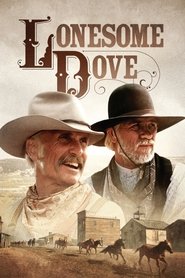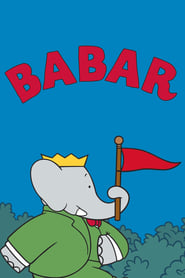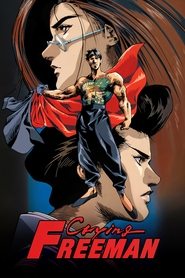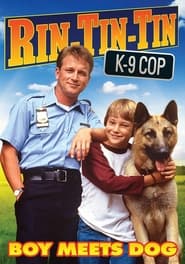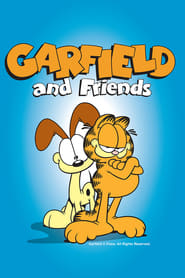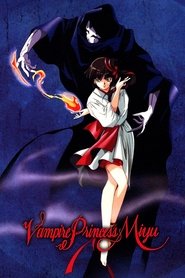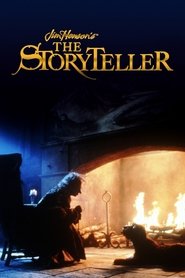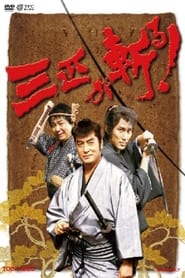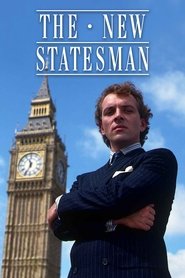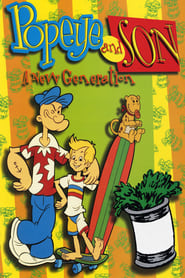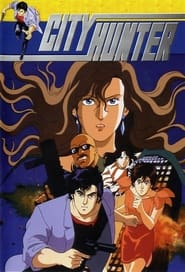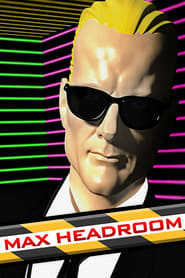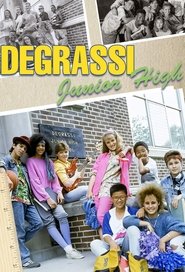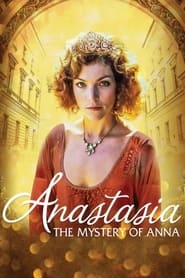New History TV Series on Plex - Page 79
-
Around the World in 80 Days
1989
star 6.7The plot centres around Phileas Fogg making a £20,000 wager with three members of the Reform Club that he can circumnavigate the world in 80 days. He takes with him his newly employed French valet Passepartout, and is pursued by Detective Wilbur Fix who mistakenly thinks Fogg robbed the Bank of England and is using the wager as a cover to escape capture. -
Lonesome Dove
1989
Lonesome Dove
1989
star 7.9A pair of longtime friends and former Texas Rangers crave one last adventure before hanging-up their spurs. After stealing over a thousand head of cattle from rustlers south of the border, they recruit an unlikely crew of hands to drive the herd 3,000 miles north to the grasslands of Montana. -
Babar
1989
Babar
1989
star 6.2Inspired by Jean de Brunhoff and Laurent de Brunhoff's beloved children's books, this animated series tells Babar's life story from the elephant king's point of view, reliving his early days as a young pachyderm with important lessons to learn. -
Crying Freeman
1988
Crying Freeman
1988
star 7.1Yo Hinomura was an ordinary Japanese potter when a run-in with a Chinese mafia changed his life forever. Now an assassin for the 108 Dragons, Yo is the perfect killing machine. As a sign for remorse over his victims, he sheds tears after eliminating his targets. Because of this, he is infamously known by the Dragons and every crime syndicate in the world as the "Crying Freeman." -
Freddy's Nightmares
1988
Freddy's Nightmares
1988
star 7.2The evil, sinister killer of the "Nightmare On Elm Street" movies, Freddy Krueger, hosts this show, where each week, he shows us a tale of evil and death about the lives of people who live in Springwood. -
Unsolved Mysteries
1988
Unsolved Mysteries
1988
star 7.7Combines four to five segments of dramatic re-enactments, interviews and updates of real human and paranormal mysteries. An audience interactive call-to-action request allowed viewers to call in with tips to help solve the cases. -
Katts and Dog
1988
Katts and Dog
1988
star 5.5Katts and Dog is a French and Canadian-produced television series which ran from 1988 to 1993. It was known as Rin Tin Tin: K-9 Cop in the United States where it originally aired on CBN Cable/The Family Channel and Rintintin Junior in France on La Cinq. CTV broadcast the series within Canada. When the episodes were filmed the dog’s name was “Rudy”. When the series was aired in the U.S. and France, the name was dubbed as “Rinty” to go with the new title. However, some episodes of Katts and Dogg have the American dubbing where "Rudy" is called "Rinty" throughout the episode. The episode Hit and Run is an example of this. When the series went out in Britain, it kept the title Katts and Dog, but the dog's name was changed to “Rinty.” The show is about the life of Canine Officer Hank Katts and his canine partner who fight crime and the forces of evil. The show’s early episodes begin with Hank just finishing up Police Academy. Later on, it shows the first meeting between -
Garfield and Friends
1988
Garfield and Friends
1988
star 7.3The animated stories of Garfield the cat, Odie the dog, their owner Jon and the trouble they get into. And also Orson the Pig and his adventures on a farm with his fellow farm animals. -
Vampire Princess Miyu
1988
star 5.8The adventures of a vampire girl, whose destiny is to hunt down all stray shinma (demon) and send them back to the darkness. -
The Storyteller
1988
The Storyteller
1988
star 8.2The Storyteller aided by his cynical dog, narrates classic folk tales, fables, and legends. -
Lethal Three
1987
Lethal Three
1987
star 10A wandering samurai, ronin, and ninja; meet by chance repeatedly and reluctantly team up to solve the problems of innocent villagers along the way. -
Wiseguy
1987
Wiseguy
1987
star 6.5Vinnie Terranova does time in a New Jersey penitentiary to set up his undercover role as an agent for the OCB (Organized Crime Bureau) of the United States. His roots in a traditional Italian city neighborhood form the underlying dramatic base throughout the series, bringing him into conflict with his conservative mother and other family members while acting undercover as syndicate enforcer. -
The New Statesman
1987
The New Statesman
1987
star 7.5The New Statesman is a British sitcom of the late 1980s and early 1990s satirising the Conservative government of the time. -
Popeye and Son
1987
Popeye and Son
1987
star 4.6Popeye and Son is an animated television series produced by Hanna-Barbera Productions and King Features Entertainment, and aired for one season and thirteen episodes on CBS. Maurice LaMarche supplied the voice of Popeye in this series, succeeding Jack Mercer in that role. It is also the first set of Popeye cartoons that were produced since Mercer's death in 1984. -
21 Jump Street
1987
21 Jump Street
1987
star 7.221 Jump Street revolves around a group of young cops who would use their youthful appearance to go undercover and solve crimes involving teenagers and young adults. -
City Hunter
1987
City Hunter
1987
star 8Ryo Saeba works the streets of Tokyo as the City Hunter. He's a "sweeper" and with his sidekick Kaori Makimura, he keeps the city clean. People hire the City Hunter to solve their dangerous problems, which he does with a Colt Python. When Ryo's not working on a case, he's working on getting the ladies, and Kaori must keep him in check with her trusty 10 kg hammer. -
Max Headroom
1987
Max Headroom
1987
star 6.8Television networks battle one another in an unrelenting ratings war. Whoever controls the airwaves controls the dystopic world in which they broadcast. So when Network 23's star reporter, Edison Carter, uncovers a deadly secret that could shake up the station's dominion over its viewers, the only option is to eliminate Carter before he can make his story public. After Carter's "accident," his mind is uploaded to create the world's first self-aware, computer-generated TV host — Max Headroom! But will Max bow to his creators? Or will he be the key to his human alter ago bringing down a network superpower? -
The Bold and the Beautiful
1987
star 5.5Continuing drama combining romance and intrigue set against the glittering backdrop of Beverly Hills and the American fashion industry. -
Degrassi Junior High
1987
Degrassi Junior High
1987
star 7.7Degrassi Junior High is a Canadian CBC Television teen drama series that was produced from 1987-1989 as part of the Degrassi series. The show followed the lives of a group of students attending the titular fictional school. Many episodes tackled difficult topics such as drug use, child abuse, teenage pregnancy, homosexuality, homophobia, racism, and divorce, and the series was acclaimed for its sensitive and realistic portrayal of the challenges of teenage life. The cast comprised mainly non-professional actors, which added to the show's sense of realism. The series featured many of the same actors who had starred on The Kids of Degrassi Street a few years earlier, including Stacie Mistysyn, Neil Hope, Anais Granofsky, Sarah Charlesworth and others. However, their character names and family situations had been changed, so Degrassi Junior High cannot, therefore, be considered a direct spinoff. The legal counsel for all the episodes was Stephen Stohn who later became the executive producer of Degrassi: The Next Gen -
Anastasia - The Mystery of Anna
1986
star 6.6Anastasia: The Mystery of Anna is a 1986 TV movie, starring Amy Irving, Rex Harrison, Olivia de Havilland, Omar Sharif, and Jan Niklas. The film was loosely based on the story of Grand Duchess Anastasia Nikolaevna of Russia and the book The Riddle of Anna Anderson by Peter Kurth. It was Christian Bale's first film and Rex Harrison's last film. It was originally broadcast in two parts.
 Netflix
Netflix
 Amazon Prime Video
Amazon Prime Video
 Apple iTunes
Apple iTunes
 Apple TV Plus
Apple TV Plus
 Disney Plus
Disney Plus
 Google Play Movies
Google Play Movies
 Paramount Plus
Paramount Plus
 Hulu
Hulu
 HBO Max
HBO Max
 YouTube
YouTube
 fuboTV
fuboTV
 Peacock
Peacock
 Peacock Premium
Peacock Premium
 Amazon Video
Amazon Video
 The Roku Channel
The Roku Channel
 AMC+
AMC+
 Kocowa
Kocowa
 Hoopla
Hoopla
 The CW
The CW
 Vudu
Vudu
 Starz
Starz
 Showtime
Showtime
 PBS
PBS
 Pantaflix
Pantaflix
 FXNow
FXNow
 Tubi TV
Tubi TV
 Kanopy
Kanopy
 Comedy Central
Comedy Central
 Crunchyroll
Crunchyroll
 Microsoft Store
Microsoft Store
 Redbox
Redbox
 Sun Nxt
Sun Nxt
 ABC
ABC
 DIRECTV
DIRECTV
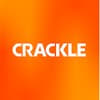 Crackle
Crackle
 Fandor
Fandor
 Plex
Plex

